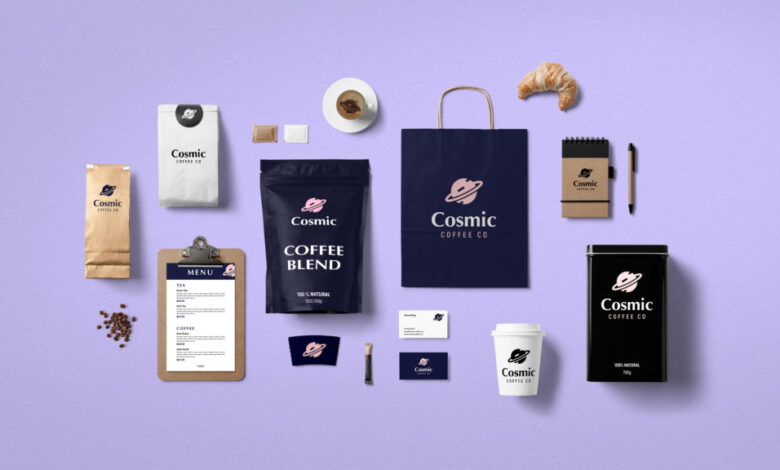How to Create a Logo That Defines Your Brand Identity

Creating a logo is one of the most important steps in establishing a strong, memorable brand. It’s the first visual representation of your business that customers notice, and it sets the tone for your entire identity. Whether you’re launching a startup, rebranding an existing company, or simply exploring creative possibilities, knowing how to effectively create a logo can have a profound impact on how your brand is perceived.
In this article, we’ll explore the fundamentals of logo design, the psychology behind color and shape, how to choose the right tools, and why consistency across branding materials matters. Along the way, we’ll also guide you to a powerful resource to Create Logo easily and professionally, even if you’re not a designer.
Why a Logo Matters
Your logo is more than just a pretty picture. It embodies the spirit, mission, and personality of your brand. A well-crafted logo:
- Builds trust with your audience
- Differentiates your business from competitors
- Encourages brand loyalty
- Enhances brand recall and recognition
Think about iconic brands like Nike, Apple, or McDonald’s. Their logos are so ingrained in our culture that even without the brand name, we instantly recognize them. That’s the power of great design.
The Essential Elements of a Logo
A strong logo typically includes several key elements:
1. Typography
This refers to the fonts used in your logo. Serif fonts can feel classic and formal, while sans-serif fonts often appear modern and clean. Script fonts can add a touch of elegance or creativity.
2. Color
Color psychology plays a big role in branding. For example:
- Red conveys energy and passion.
- Blue suggests trust and reliability.
- Green evokes health and nature.
Understanding how colors affect perception can help you choose the right palette for your business.
3. Iconography
Symbols or icons can make your logo more recognizable. A unique shape or graphic can be powerful even when used independently from text.
4. Layout
A balanced and versatile layout ensures your logo looks great across different platforms—from business cards and social media profiles to merchandise and billboards.
Logo Types: Which One Is Right for You?
There are several types of logos, and choosing the right one depends on your brand personality and industry.
Wordmarks
These logos use your brand name in a stylized font (e.g., Google, Coca-Cola).
Lettermarks
These are initials or abbreviations (e.g., HBO, IBM).
Brandmarks
These are symbol-only logos (e.g., Apple, Twitter).
Combination Marks
A mix of text and symbol (e.g., Adidas, Mastercard).
Emblems
Text inside a symbol or badge (e.g., Starbucks, Harley-Davidson).
The Logo Design Process
Designing a logo is a multi-step process that combines creativity with strategy. Here’s a step-by-step guide:
Step 1: Define Your Brand Identity
Ask yourself:
- What are your brand’s core values?
- What message do you want to convey?
- Who is your target audience?
Your answers will guide your design choices.
Step 2: Research the Competition
Look at logos in your industry. What works? What feels overused? This will help you stand out while staying relevant.
Step 3: Sketch and Brainstorm Ideas
Start with rough sketches to explore concepts. You don’t need to be an artist—this stage is about generating ideas.
Step 4: Choose a Design Platform
Unless you have a professional designer, consider using online tools like Adobe Express to create logo. It provides templates, fonts, and icons to help you build a logo from scratch or customize an existing one.
Step 5: Refine Your Design
Simplify your logo as much as possible. The best logos are clean, scalable, and easy to reproduce in black-and-white.
Step 6: Test for Versatility
Check how your logo looks in different sizes and formats. Print it out. View it on a mobile screen. It should be equally effective in all settings.
Design Tips for Beginners
If you’re not a professional designer, here are some tips to keep your logo clean and effective:
- Less is more: Avoid clutter and too many elements.
- Stay timeless: Trendy designs can become outdated fast.
- Think about scalability: A logo should look good both on a billboard and a business card.
- Avoid clichés: Lightbulbs for ideas, globes for global—try something unique.
- Use whitespace: It helps your logo “breathe” and feel more refined.
Color Psychology in Logo Design
As mentioned earlier, color plays a huge role in the emotional impact of your logo. Here’s a quick guide:
| Color | Emotion/Message | Best for Industries |
| Red | Energy, urgency, love | Food, retail, entertainment |
| Blue | Trust, security, calm | Finance, healthcare, tech |
| Green | Growth, nature, health | Environment, agriculture, wellness |
| Yellow | Happiness, optimism | Travel, children’s products, retail |
| Black | Sophistication, luxury | Fashion, tech, luxury goods |
| Purple | Royalty, creativity | Beauty, education, spirituality |
| Orange | Warmth, fun, friendliness | Hospitality, food, sports |
Choose colors that align with your brand message and values.
Common Mistakes to Avoid
Even experienced designers sometimes fall into these traps:
- Copying other logos: Inspiration is fine, but your logo should be original.
- Overcomplicating: Complex designs don’t scale well and are hard to remember.
- Ignoring feedback: Get opinions from others before finalizing.
- Skipping the black-and-white test: Your logo should still be recognizable without color.
- Not protecting your logo: Once finalized, consider trademarking your logo to protect your brand.
Logo File Formats You Should Know
When you finalize your logo, make sure you get it in the following formats:
- .SVG or .EPS: Vector formats for high-quality printing and resizing.
- .PNG: Transparent background for websites or merchandise.
- .JPEG: High-res images for online use.
- .PDF: Great for sharing proofs and print materials.
These formats ensure you can use your logo flexibly across different mediums.
Creating a Logo Online: Why Adobe Express is a Top Choice
Adobe Express offers an intuitive way to create logo designs from scratch or by using pre-designed templates. You don’t need to be an expert. With drag-and-drop functionality, extensive icon libraries, custom color options, and a wide selection of fonts, you can bring your vision to life in minutes.
Whether you’re building a new identity or refreshing your current one, Adobe Express is beginner-friendly and perfect for quick, high-quality results.
How Your Logo Fits into the Bigger Branding Picture
While your logo is critical, it’s just one part of your brand identity. Make sure it aligns with your:
- Website design
- Social media visuals
- Packaging and labels
- Email signatures
- Business cards
Consistency across all touchpoints strengthens your brand presence and builds credibility.
Real-Life Examples of Great Logo Design
Let’s take a quick look at a few real-world brands:
- FedEx: Simple typography, with a hidden arrow between the “E” and “x” symbolizing speed.
- Amazon: The smile from A to Z communicates both customer happiness and product variety.
- Baskin-Robbins: The “31” hidden in the “BR” reflects the number of flavors they offer.
These logos aren’t just graphics—they tell a story and engage the viewer on multiple levels.
Future Trends in Logo Design
Logo design trends evolve with time. While timeless design always wins, keeping an eye on trends helps your brand stay fresh:
- Minimalism: Clean, simple designs still dominate.
- Responsive logos: Logos that adapt to screen size and device type.
- Geometric shapes: Using basic shapes for modern, structured aesthetics.
- Hand-drawn styles: Add a personal and authentic touch.
Stay flexible with your branding while keeping your core identity intact.
Conclusion
A logo isn’t just about looking good—it’s about telling your brand’s story in a visual way. When done right, it creates a lasting connection with your audience and strengthens your identity across platforms. From typography and color psychology to layout and scalability, every element plays a role.
Thanks to tools like Adobe Express, you can now create logo designs that are polished, professional, and perfect for your brand—even without a background in design.
Whether you’re launching a new venture or refreshing your image, start your logo journey today. A strong visual identity starts with a powerful logo—make yours count.



